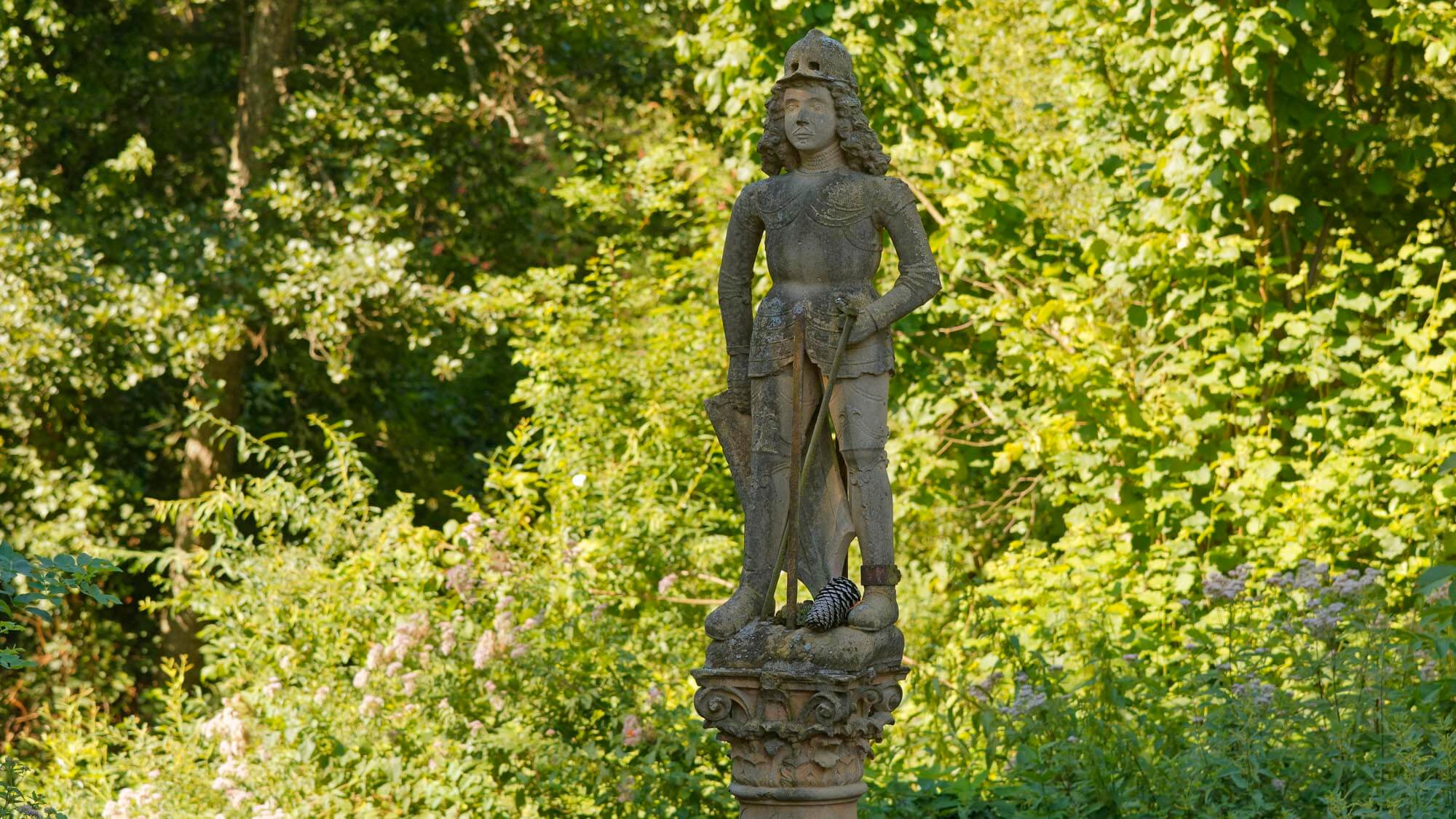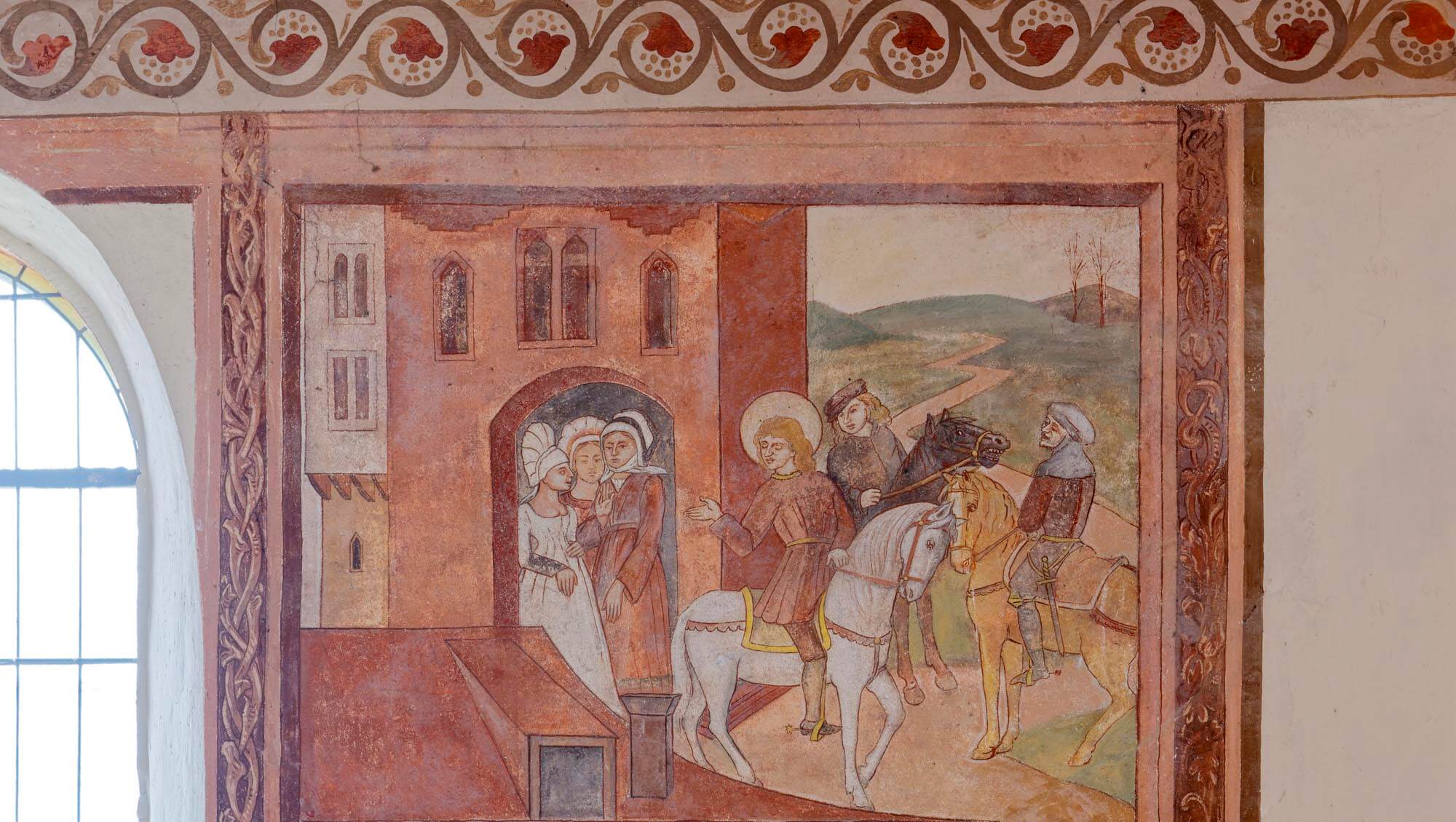St. Gangolph and the Cuckoo Market
The St. Gangolph chapel lies in an enchanting spot on the northern outskirts of Schweighouse, in the mouth of the valley leading to Col du Bannstein. The saint’s life is depicted on the walls of the chapel, in frescos that date from Martin Schongauer’s time. He is honoured as the protector of springs, and as a source of help with marital difficulties. According to legend he was an 8th century nobleman at the Merovingian court in Burgundy, under Pippin the Younger. On returning from a campaign he accused his wife being unfaithful to him with her priest. Her guilt was proven by ordeal – the water in the holy well inflicted burns on her arm. In response Gangolph left the town and withdrew into a religious life at Avalon. His wife’s lover, however, is said to have followed him there and killed him by the sword on the 11th of May 760. His grave later became the site of many miracles. By the end of the 9th century he was already venerated as a saint. His feast day is celebrated on the first or second Sunday in May with a church service and a small “Cuckoo Market” in Schweighouse.









